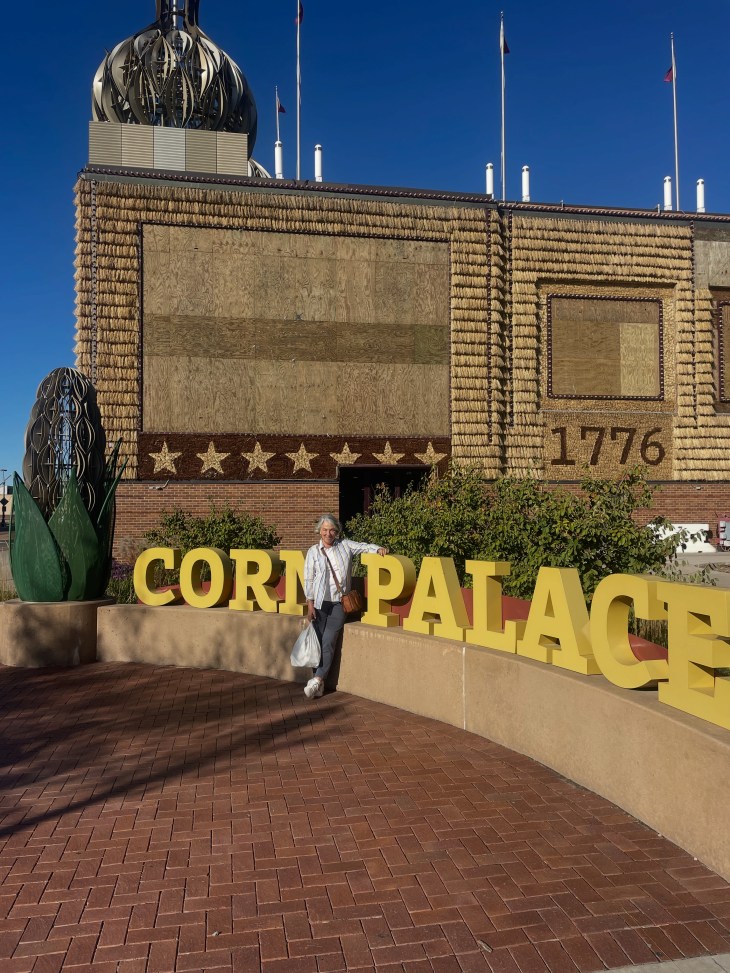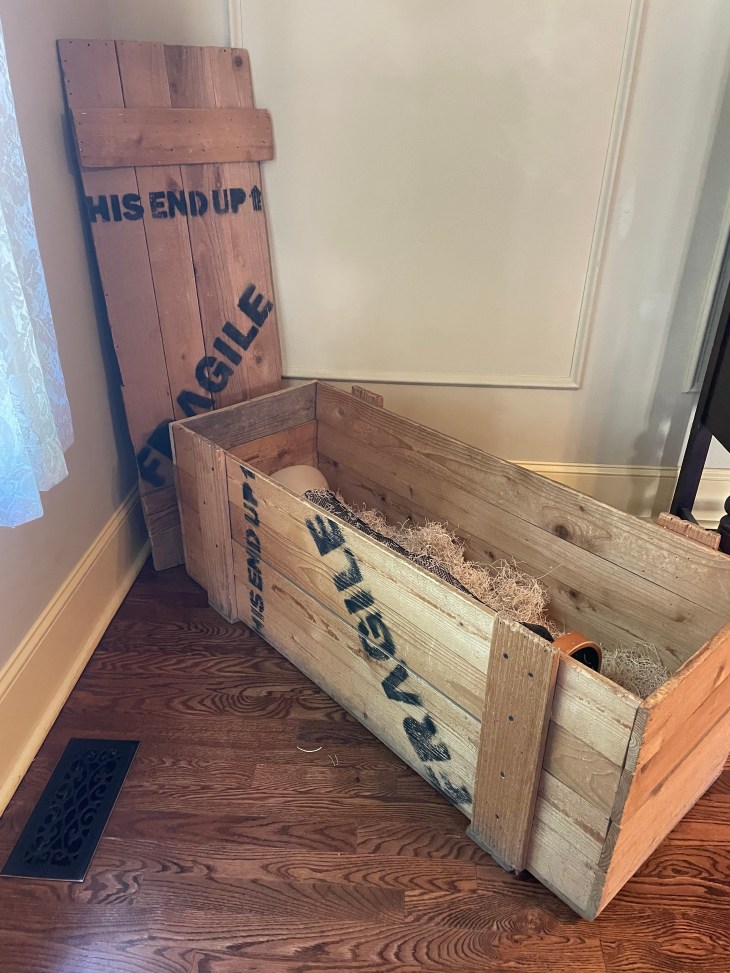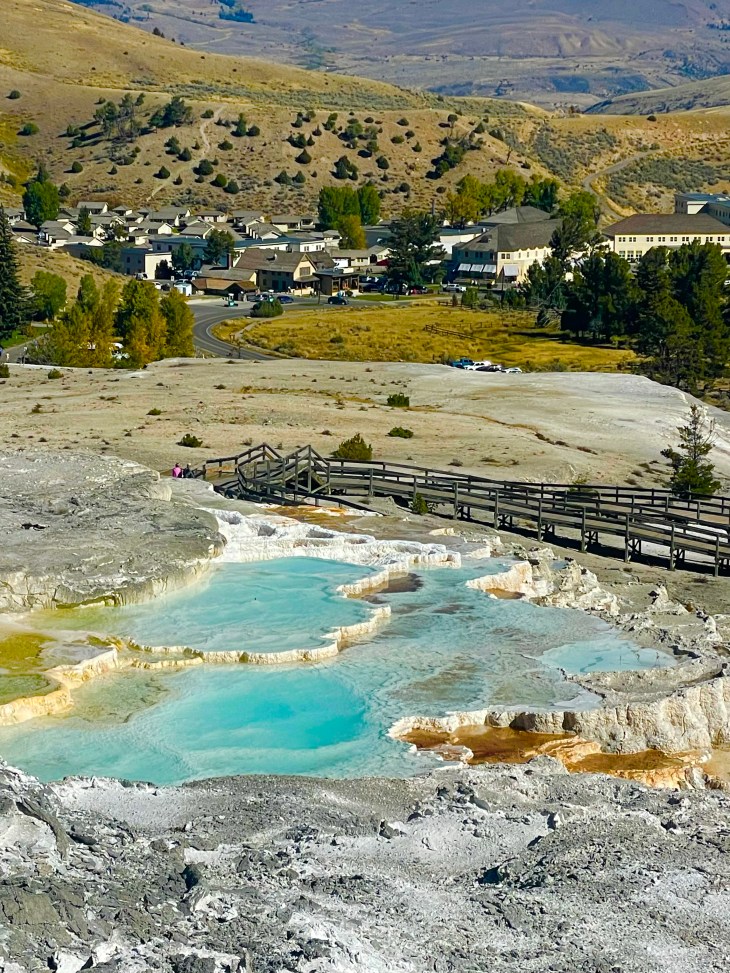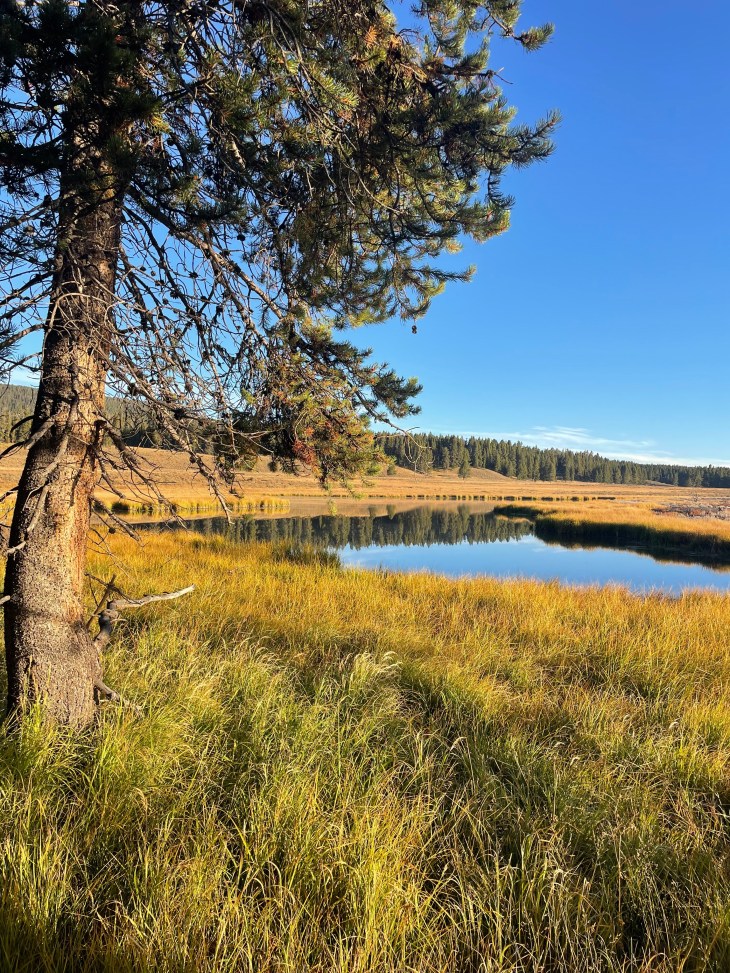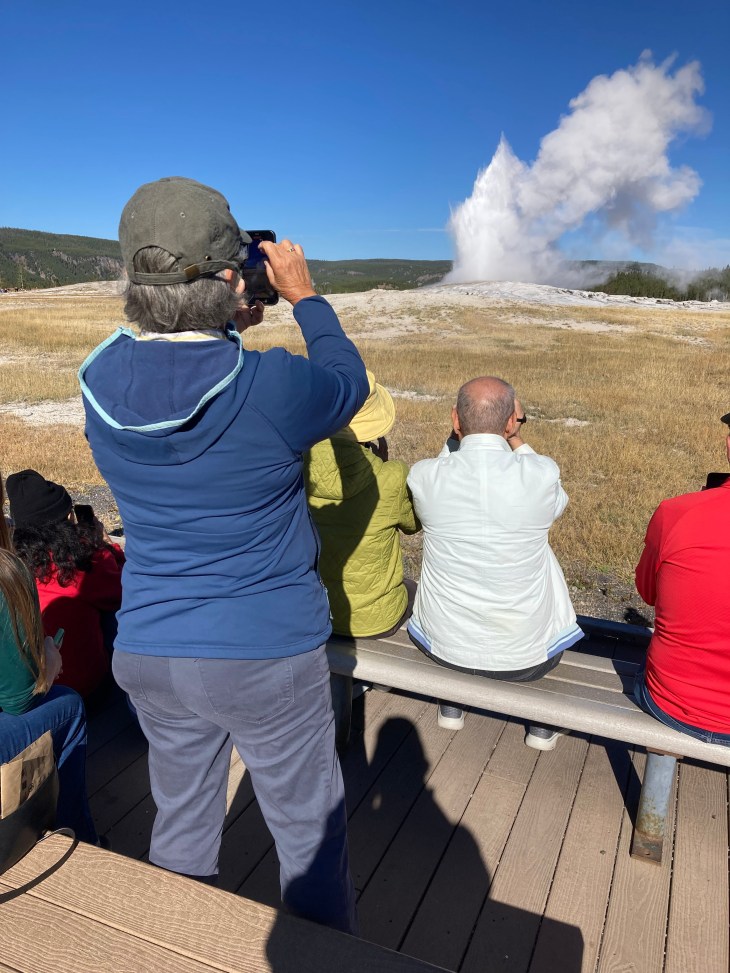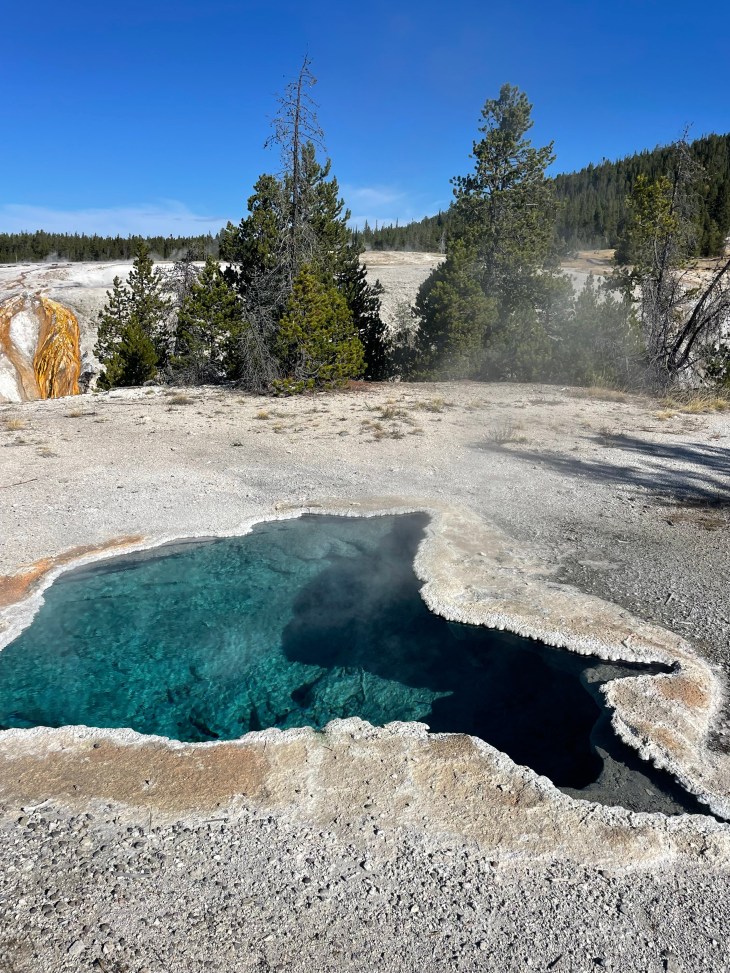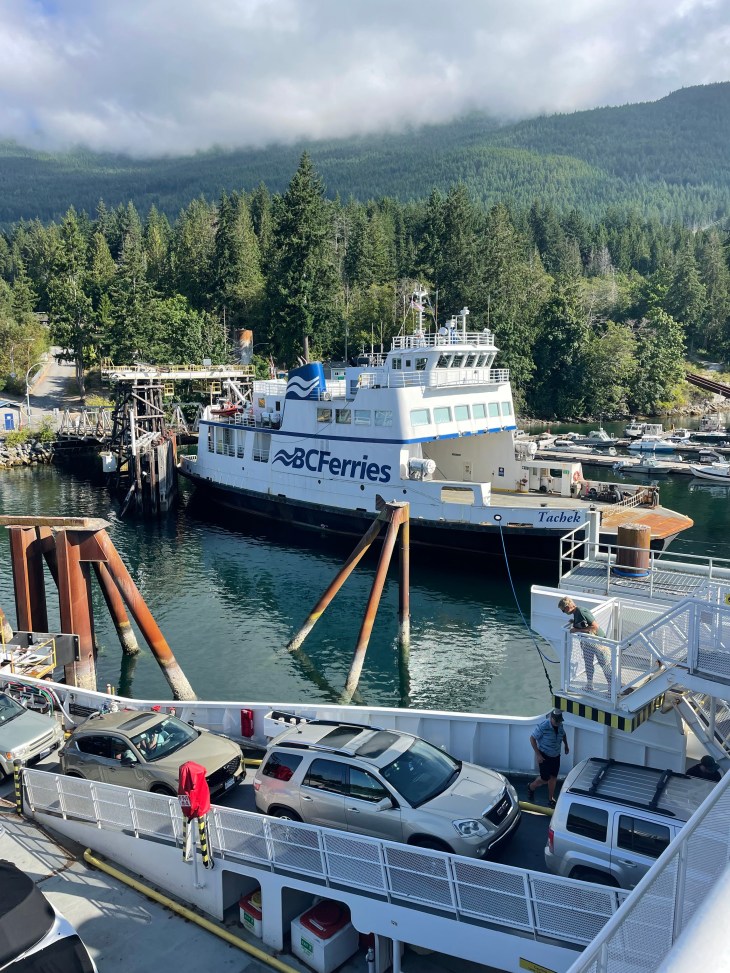We just returned from two weeks in Europe, where we did our first-ever river cruise. The cruise we chose was with Viking River Cruises and was focused on Christmas Markets along the Rhine and Main Rivers. Given how we usually travel independently, I wasn’t sure what to expect with this cruise. But we had a very enjoyable time. There were a few things we didn’t love, but overall it was fun. So if you are considering visiting European Christmas Markets with Viking River Cruises, here is my report.
Onboard the Modi
Before I tell you about each of the Christmas Markets, let me tell you about our experience onboard the Modi. Known as longships, the river fleet in Europe each holds 190 passengers. Since we were new to this kind of travel, we chose the least expensive room called a Riverview.
Here’s a breakdown of typical room types on Viking Longships:
- Riverview Staterooms: On the Main Deck, these have fixed windows located higher up on the wall for views, often slightly larger than French Balcony rooms.
- French Balcony Staterooms: Feature a floor-to-ceiling sliding glass door, but without space for chairs outside, allowing the room to feel more open.
- Veranda Staterooms: The most common type, offering a full outdoor balcony with seating for two.
- Veranda Suites: Two-room accommodations with a separate living area and a full balcony off the living room, plus a French balcony in the bedroom.
- Explorer Suites: The largest suites, located at the stern, featuring two rooms and a wraparound balcony.
What About the Cost?
Because a river cruise is significantly more expensive than an ocean cruise (and way more than our usual day to day travel costs) this less expensive room was just fine for us. We had plenty of room, storage and the bed was very comfortable.
Each day on the cruise we were provided at least one excursion at no cost. Additional excursions were available for a fee. Additionally special lectures, music and even high tea provided more entertainment.
Three meals a day were provided on the ship. During meals, wine or beer is included. Additional alcoholic beverages outside of meal time were available at a cost in the lounge. Guest who want to drink more alcohol have an option to purchase a beverage package. We did not do that.
The food on board was very good. Most meals exceptional. Additionally the staff both in the restaurant and elsewhere was superb.
Our ten day cruise from Basel Switzerland to Nuremberg Germany cost $9200 for two people. When comparing costs with ocean cruises keep in mind the wine and beer at meals on Viking River Cruises is included (ocean cruises you pay a lot for drinks) and the fact that daily at least one excursion is included with your cruise.
This cost however is significantly more than our normal daily travel costs. For comparison the total cost of this 14 day trip was about the same as our 26 day Stans Tour with Intrepid Travel or 35 days on our own in Bordeaux France. Our thirty day stay in Philippines was a third of what we spent on the cruise.
Europe is Magical in the Winter
We did not see snowfall, but we had some cold, crisp days and we found that added to the festive atmosphere of the Christmas Markets. I have become a big fan of off-season travel, but that said the Christmas Markets can get very busy. In fact, due to a lot of travel “influencers”, European Christmas Markets are now generally crowded. During our cruise we visited a total of ten Christmas markets. Some very big and busy, others small and very local. Below are my thoughts on each of the nine.
Things to Know
Before I go market by market let me explain a couple of things. Firstly, the mugs. Each European Christmas Market has mug for the popular Gluhwein. These mugs change annually and are a popular collectors item. Gluhwein is a hot mulled wine served throughout Europe during the holidays. Mugs of warm Gluhwein are available for purchase and you pay a deposit for the mug. If you want to keep the mug you don’t get your deposit back. Or, return the mug to any vendor throughout the market and your deposit is returned. I kept two mugs from Heidelberg and two mugs from Wurzburg. Other drinks like hot chocolate are also available in the mugs.
Local food items are available at the markets, with popular choices being bratwurst and other sausages, potato pancakes (called Kartoffelpuffer ), raclette, fish sandwiches, pork burgers, lots of sweets and more.
Visiting the markets via land perhaps by train would be just as fun, maybe more so. Ten markets was too many, as they begin to all blur together after awhile. I was expecting each to be unique, but they were very similar. I was expecting more handmade local items for sale, but we only found that in a couple of places. Most items were mass produced somewhere else. That was disappointing.
FRANKFURT GERMANY
We arrived in Frankfurt from our Seattle flight, and planned two nights in this city before heading to the cruise. So on our own we found our way around Frankfurt. Frankfurt’s Christmas Market is one of the oldest and largest markets in Germany dating back to 1391.
Where we stayed: Motel One Frankfurt-Romer – excellent
Where we ate: We had an excellent and authentic German dinner at Zum Standesamtchen one evening and enjoyed the foods of the market as well.
Don’t miss: The Main Christmas Market is spread out near the Cathedral. Be sure to visit Frankfurt’s treasured jewel, the Imperial Cathedral of Saint Bartholomew. If you have extra time in Frankfurt like we did I recommend the Stadel Art Museum and walking across the Iron Bridge
BASEL SWITZERLAND
We took the train from Frankfurt to the border town of Basel Switzerland, and the three hour ride was on time, clean and comfortable. We had a full day and night in Basel before boarding the ship.
Basel is a wonderful mix of old and new and the medieval Old Town’s pastel buildings date back to the 15th century.
Where we stayed: East West Hotel – excellent
Don’t miss: We really enjoyed the Basel market and sampled raclette, sausages, potato pancakes and lots of Gluhwein. There is a market in the cathedral square overlooking the city, and another at the bottom of the hill. The old town is beautiful with the Rathaus and square and also it’s worth it to visit Freie Strasse pedestrian street, walk across the holiday lit historic Mittlere bridge and visit the Spalentor gate.
Before leaving Switzerland we enjoyed an optional shore excursion to indulge in the Swiss tradition of Fondue. I highly recommend this when in Switzerland. We learned a lot and we ate a lot.
BREISACH GERMANY
We sailed over night and woke up in Breisach Germany, the gateway to the Black Forest. It was an early departure day for the excursion we chose. We boarded a comfortable coach to drive away from the river and into the mountains.
Don’t miss: The drive was beautiful and we even saw some snow. But the best part was seeing the beautiful old villages where the German people have lived and toiled for generations. Our destination this day was the touristic village of Hofgut Sternen. Here we enjoyed a short hike to an ancient tiny church. Next we had time to watch glass blowing and learn about the art of Cuckoo Clock making, before learning how the famous Black Forest Cake is made. And if that wasn’t enough, we also had a wonderful lunch around an open outdoor fire pit.
Despite the long bus ride, this was one of my favorite days.
STRASBOURG FRANCE
Sailing overnight we awoke in France. Bonjour! Strasbourg is home to the oldest Christkindelmarkt in Europe, dating back to 1570. Petite France, the jewel of Strasbourg, is a UNESCO World Heritage Site with its stunning half timbered houses and winding canal.
Unfortunately the day we visited the market was very crowded and the line to get inside the massive and gorgeous Notre Dame cathedral was so long. Despite the hype, this was one of my least favorite markets.
Don’t miss: The best part of our day was the canal cruise, where we learned from our guide fantastic history of this beautiful city. Weather was sunny and the canal boat with so many windows made the experience great. I really wanted several more hours in this city. But we had to head back because we had a second afternoon excursion to…
Gengenbach Germany
I signed up for this optional excursion on the same day as Strasbourg, specifically to have an opportunity for a night market. We took a coach about an hour from Strasbourg to the tiny town of Gengenbach.
Ahhhh. That’s better. Not too crowded and the prices were great. Beautiful medieval town that still lives and breathes and is not just for tourists. The market was a comfortable size to walk around and unlike Strasbourg many of the booths were locally made items.
Don’t miss: Gengenbach’s historic center is a protected area, part of Germany’s Timber-Frame Road. Gengenbach is a popular destination, famous for its well-preserved medieval old town and its unique tradition of turning the City Hall into the worlds largest Advent Calendar. The evening included live music and a Christmas performance by local children. This is much more what I expected from a European Christmas Markets with Viking River Cruises.
KARLSRUHE GERMANY
This day we squeezed in two excursions again. Waking up we found ourselves in port in the town of Plittersdorf. We boarded the coaches for the drive to Karlsruhe. Nicknamed The Fan City due to the street layout, Karlsruhe is home to the Karslruhe Palace. Built in 1715 by Margrave (Prince) Karl Wilhelm of Baden-Durlach it embodies his vision of newly found city.
Don’t miss: Karlsruhe has several markets, all very small. This was my least favorite stop of our cruise, however I give the prize for best decorated market booths to the market at Friedrichsplatz. For a small market each vendor had beautifully decorated and festive presence, each unique.
Baden Baden Germany
This optional excursion to Baden Baden was excellent. And possibly my favorite market, or at least in the top three, of the ten we visited. The UNESCO World Heritage site, Baden Baden is a famous spa town nestled in the Black Forest. Known for its storied history, luxurious spas and healing waters, elegant architecture and cultural vibrancy, it reminded me of a smaller Vienna.
Don’t miss – we really enjoyed our guided tour learning history of the popular destination in the 19th century where European royalty came to “take the waters”. Visiting the beautiful spa building, opera house, casino and enjoying the dozens of créche scenes were outstanding. Great food and items for sale, all surrounding a beautiful square and Christmas tree. The local cathedral, though not ancient is also a beautiful sight.
Heidelberg Germany
Next morning we woke up in Frankfurt. Since we had already enjoyed two days there (see earlier comments) we chose to do the included all day tour to Heidelberg. Although it was a long day, it was one of our most enjoyable.
Heidelberg, Germany, boasts a rich history as the former capital of the Palatinate, home to Germany’s oldest university (founded 1386), and a symbol of German Romanticism, featuring magnificent castle ruins that survived major wars. Its story spans Celtic/Roman settlements, medieval growth, devastation in the Thirty Years’ War, a Baroque rebuilding, 19th-century cultural bloom, and its post-WWII status as a scientific hub, largely spared from bombing, preserving its historic charm.
Don’t miss – The Heidelberg old town is long and narrow and the Christmas Markets here are spread out throughout several different squares. The Old Bridge is a highlight and it’s an absolutely must to go up to the historic castle ruins overlooking the town. We also enjoyed a visit to the famous Kathe Wohlfahrt store, known throughout the world for Christmas items. A highlight of this day was lunch at a famous restaurant called Kulturbrauerei, where we ate with students from the Heidelberg University. A special treat to talk to them and learn their stories. Food was great too.
MARKTHEIDENFELD AND LOHR AM MAIN GERMANY
No excursions planned until afternoon on this day, so we actually skipped breakfast and caught up on our sleep. By this time in our trip we were both feeling exhausted, and a bit bloated from all the food! During the morning the crew provided some fun for guests including a Gingerbread demonstration and future cruise suggestions.
In the afternoon we arrived at the port of Marktheidenfeld. Our included excursion today we would visit the very small town of Lohr am Main, said to be the home of the women who inspired the story of Snow White.
Don’t miss – Lohr am Main’s Christmas Market was a very small one, but also very local and authentic. After a brief walk around the town, where we also learned about the Snow White legend, we spent some time at the market and purchased a beautiful wooden bowl from a man who actually made the bowl. This made me happy since so much of the items for sale at the markets are mass produced.
Back to the ship in Marktheidenfeld we walked around the very tiny market here as well. Another historic and authentic medieval town with half timbered buildings, this market is only held one weekend a year and we happened to be here on that weekend.
WURZBURG GERMANY
Waking up in Wurzburg, we stepped outside on the small deck to discover one of the most beautiful sites of our entire cruise. Sunrise in Wurzburg on the Main River blew me away. It’s gonna be a good day.
Würzburg, Germany, boasts a rich history from Celtic settlements to a powerful Prince-Bishopric, a vibrant Jewish center, and a major Holy Roman Empire hub, known for its stunning Würzburg Residence (a UNESCO site) and Marienberg Fortress, though it suffered massive destruction in WWII bombings, with significant rebuilding efforts restoring its Baroque and Rococo charm, making it a significant cultural and academic city today.
Don’t miss – many guests did a full day trip to Rothenburg, a gem of a medieval German city. But Arne and I had visited Rothenburg before, so we decided to stay closer to the ship and do a walking tour of Wurzberg. I am so glad we did. The market was good, but very similar to every other market, but I loved the heart shaped mugs. Wurzburg is also home to the UNESCO World Heritage Site Bishops Residenz sometimes called the little Versailles. Our guide was amazing and we learned a lot about the history of the Residenz as well as the rebuilding of both the Residenz and the town after WWII. I enjoyed this day very much.
BAMBERG GERMANY
Many cities along Germany’s great rivers are known for their wine. Bamberg however is known for it’s signature beverage: rauchbier, a smoky beer made with malt that has been dried over wood fires. We chose to do an optional excursion on this day to taste and learn more about rauchbier.
Don’t miss – We were in Bamberg on a Sunday, so all the regular shops were closed. However our excursion included a brief history walking tour of this cute small town which is home to two rivers; the Main and Regnitz. Bamberg is one of the few cities in Germany not destroyed in WWII and retains a large selection of medieval structures in it’s Old Town. It was named a UNESCO World Heritage Site in 1993.
Our beer tasting was remarkable. We tasted FIVE different beers from Hellerbrau founded in the 15th century, learned the nuances and history of the choices and were served a remarkable spread of pretzels, brown bread and delicious meats and cheeses. All in a historic brewery/restaurant building from the 14th century. I am so glad we did this.
NUREMBERG GERMANY
It’s our final stop on this Christmas Cruise! The ship arrived early in the morning and we have a full final day. My husband and I plan to stay in a hotel and enjoy one more full day in Nuremberg after we disembark.
Nuremberg’s history spans from a vital medieval trade hub and Holy Roman Empire center, known for art and printing, to becoming the symbolic heart of the Nazi Party with massive rallies and discriminatory Nuremberg Laws in the 1930s. Nuremberg famously became the site of the post-war Nuremberg Trials, which established international justice for war crimes.
Where we stayed- Avenue Hotel – perfect location
Where we ate- Tucher-Brau am Opernhaus this is an absolute must when in Nuremberg. Make a reservation. For lunch we highly recommend Bratwursthausle where you can sample the small Nuremberg style sausages. Be sure to get the potato salad too.
At Least Two Days in this City
Don’t miss – Nuremberg Castle and moat area, one of the only moats remaining in Germany. The first castle on this site was built under the Salian kings respectively Holy Roman Emperors (1027–1125). Today the castle offers an interesting look into the history of this region with a stunning view of the city that has built up below.
There are several markets in Nuremberg and we tried to hit them all. The main one is in front of the City Hall building by the famous Schoner Brunnen fountain.
The historic site of the Nuremberg Trials, Courtoom 600, the post-WWII Nazi trials that changed the world forever. Don’t miss this when in Nuremberg.
River walk – stunning way to enjoy the medieval architecture
Underground tour of the historic rock cut cellars (fascinating). Handwerkhof Artisans Street, the Kinder Christmas Market (less crowded and full of fun animation), Weisgerbergasse street with the historic and authentic half timbered houses.
This city is beautiful, pedestrian friendly and full of fabulous restaurants and sites. I recommend it highly at Christmas time or anytime of the year.
European Christmas Markets with Viking River Cruises
Some final thoughts. Would I cruise with Viking again? Maybe. I’m just not sure group travel of this style is for us. That is not to say we didn’t have fun, but we prefer more independent travel.
Would we do the Christmas Markets again? Maybe. But only one or two. Markets are falling into the overtouristed categories, so if I were to go again I would carefully chose which ones and go as early in the season as possible.
My favorites of the markets we visited were; Nuremberg, Baden Baden, Heidelberg and Gengenbach.
Thank you for reading my long post European Christmas Markets with Viking River Cruises. I am happy to answer any questions you have about our experience. We always appreciate your pins, shares and comments. Thank you and have a very Merry Christmas!
Want to read about the wardrobe I packed for this 16 day winter adventure? Read my post Winter Wardrobe for European Christmas Market Cruise here.





















































































































